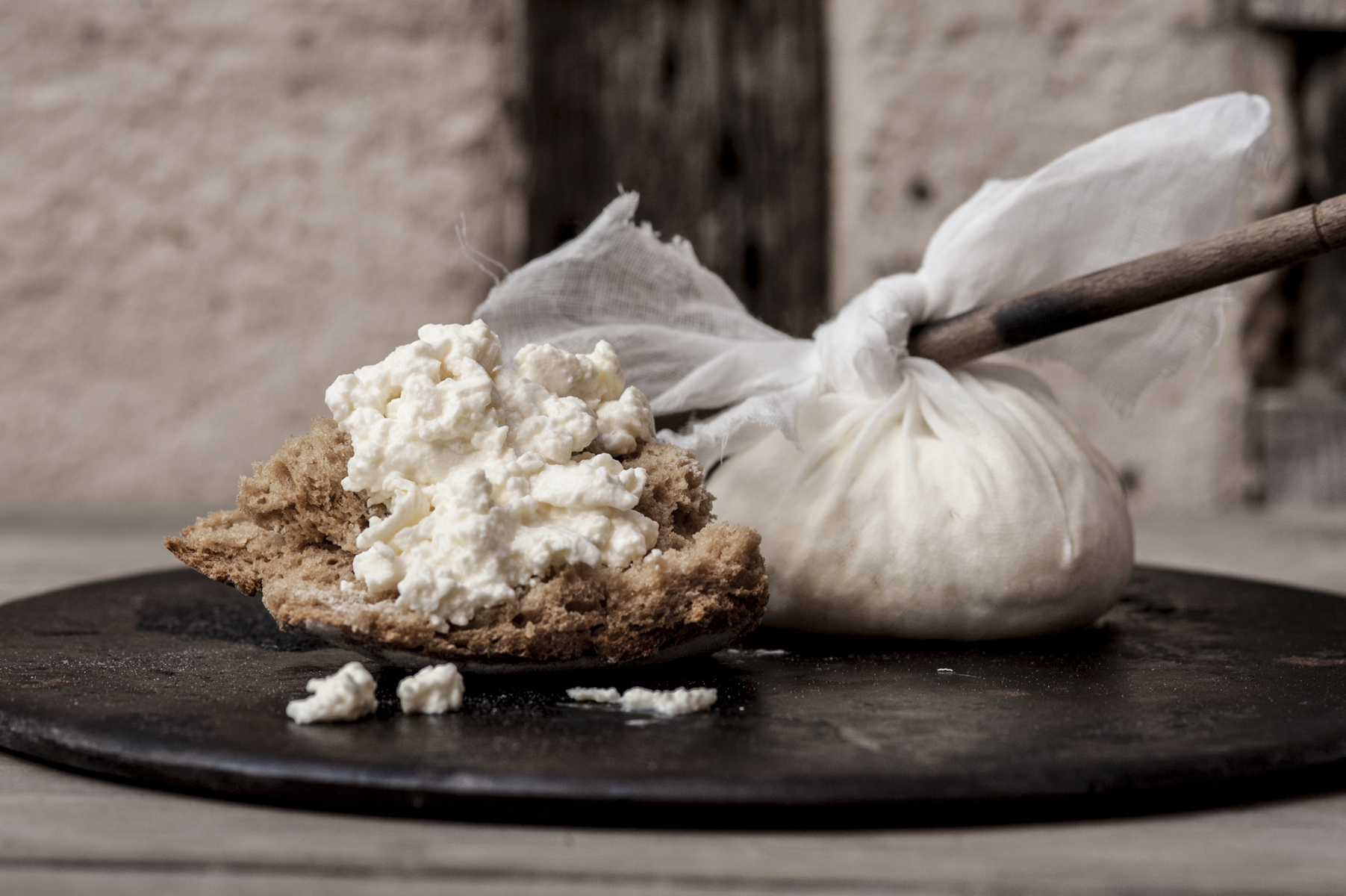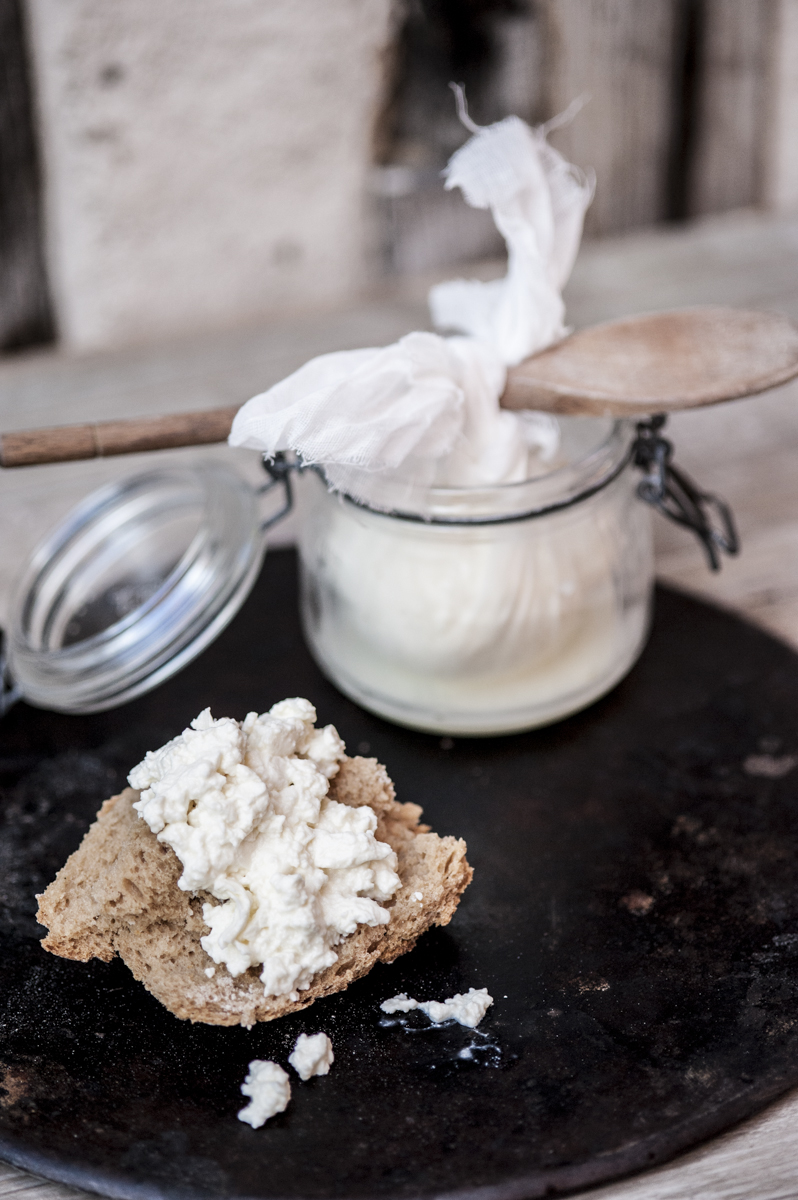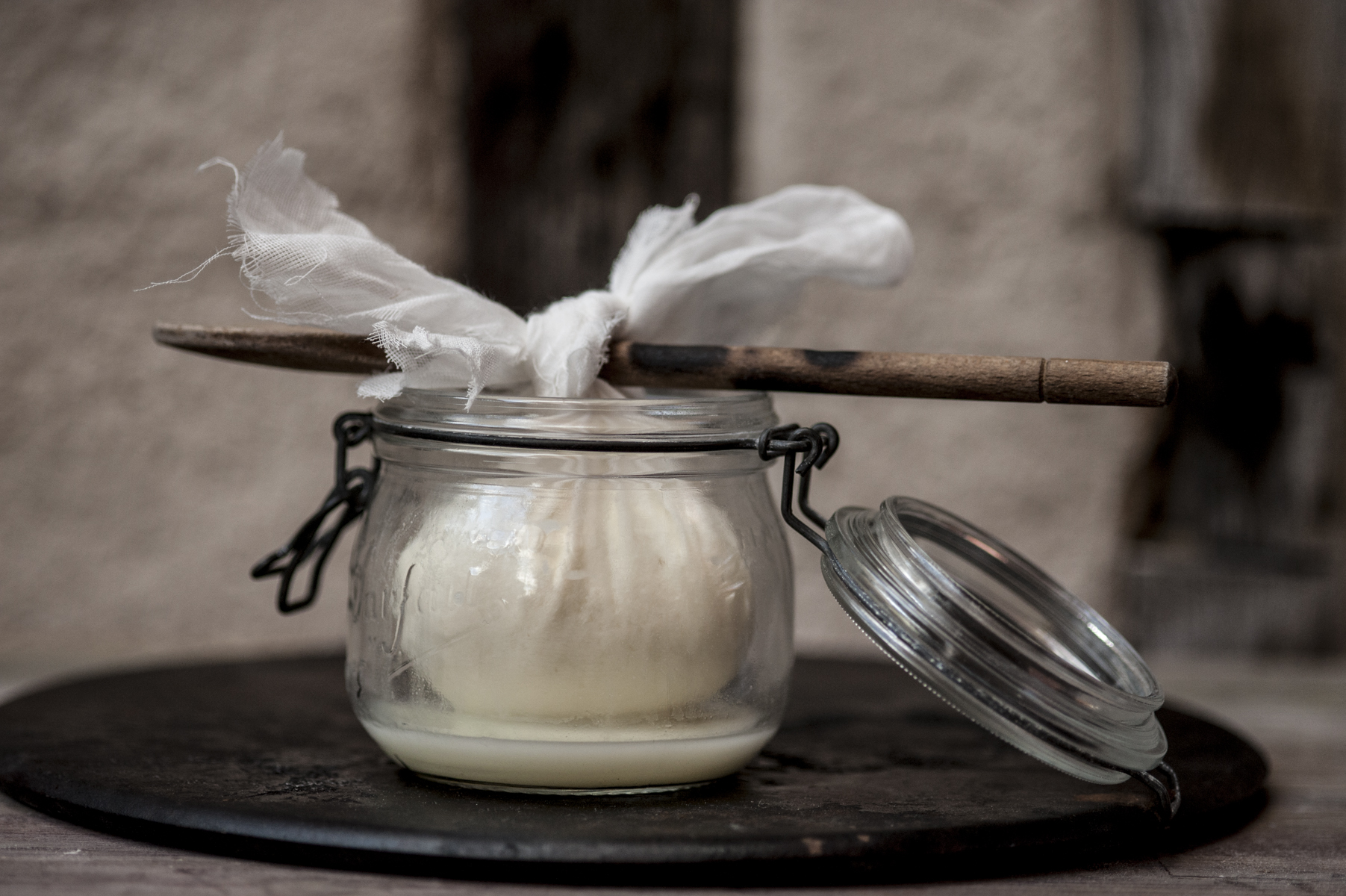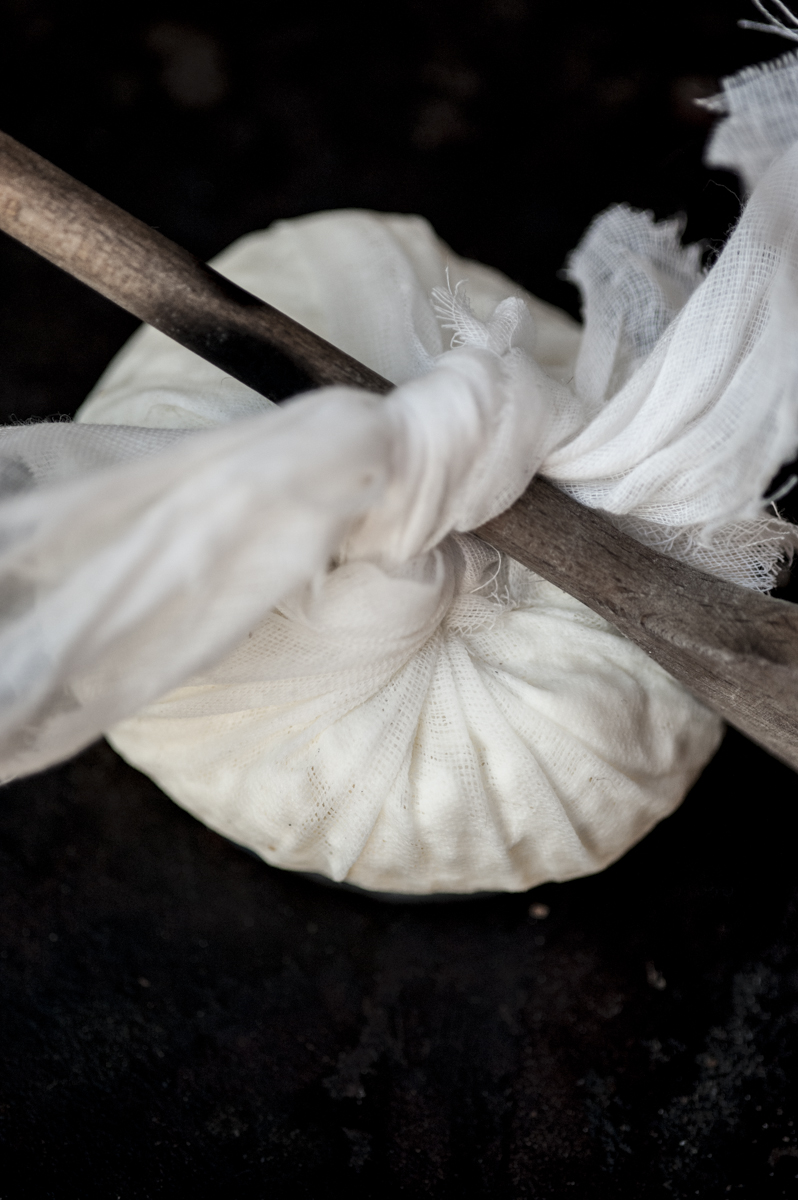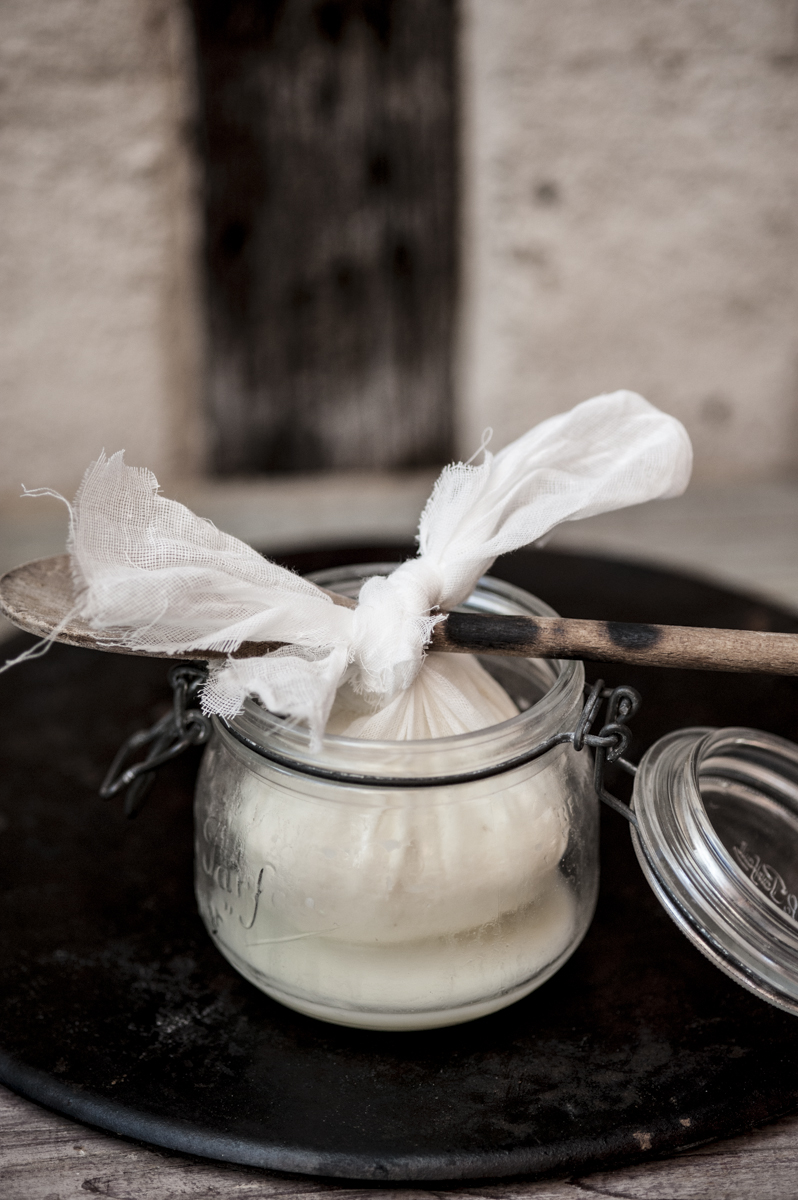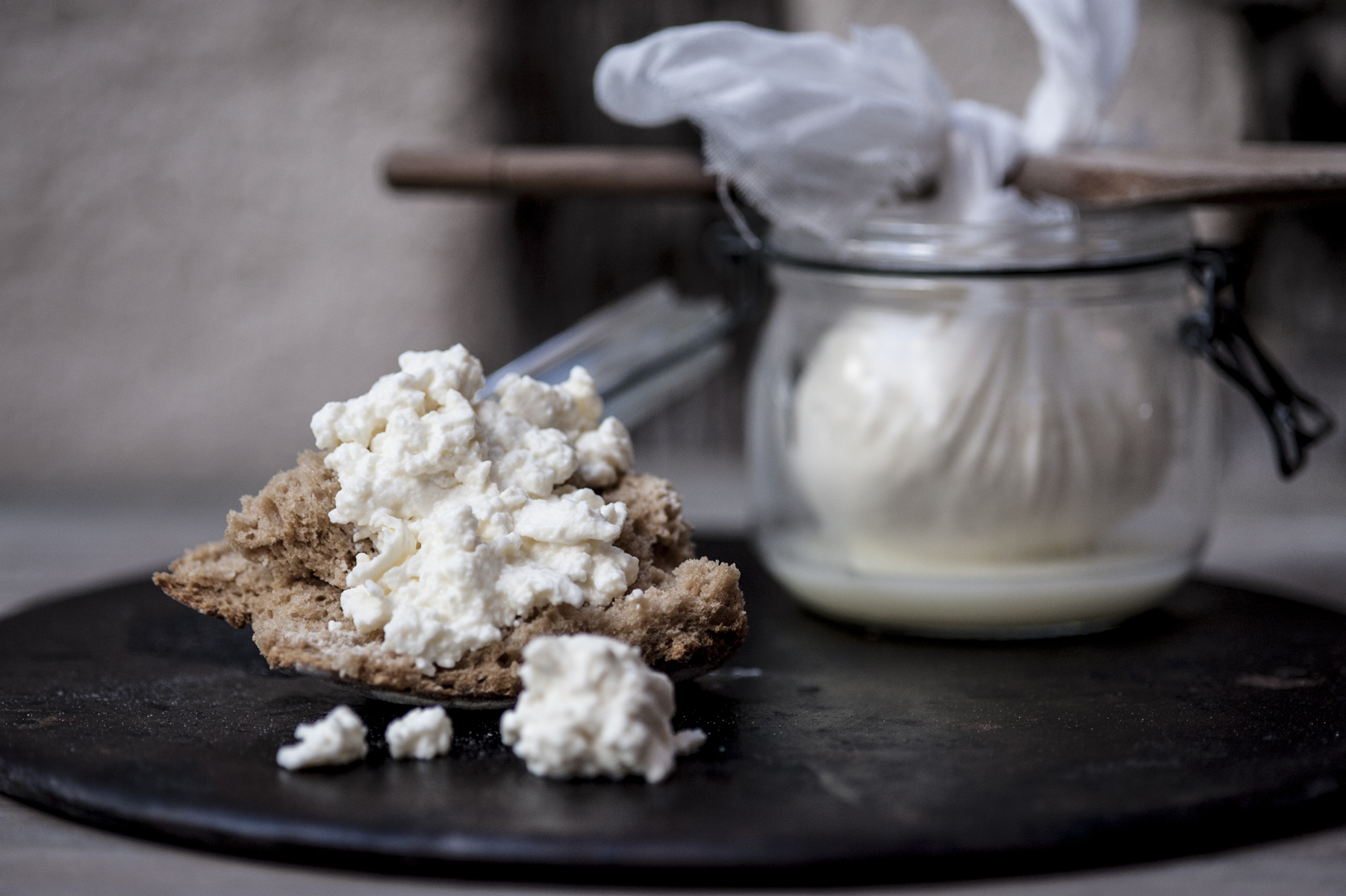Recipe
Soft Cheese
Words by Miranda GodfreyPhotography & Styling by Daria MarczakStyling by Miranda Godfrey
People often shy away from things that they believe must be too complicated. Of recent years I have been fascinated by how cheese is made but, like most people, I thought it must be a mission to accomplish.
Throughout my younger years I stuck with the usual – cheddar, cream cheese and an occasional grating of Parmesan. The only cheese dish I regularly ate was good old cheese on toast (with a slice of tomato, if I was feeling particularly adventurous).
I then went to a cheese tasting, convinced I would hate everything. The man who presented the session, however, was so passionate about his cheeses. He explained everything from the type of milk and where it came from, to how it was produced and what would compliment its flavour. I was hooked.
This was fifteen years ago, but that hour and a half changed the way I ate and, more importantly, how I cooked with cheese forever more.
Last year I noticed a cheese making course posted on a local Facebook page. I went along to meet eleven other like minded people, all eager to know more about the methods of cheese making. Like the cheese man I mentioned earlier, it was the passion for the product which had us all absorbed in the whole session.
We made Halloumi, Mascarpone, soft cream cheese and a herb boule. I bought a kit, and home I went to make cheese!
The recipe I’m sharing is one I have adapted to my own taste, so feel free to add your own extras.
There is nothing more satisfying than making something from scratch and seeing it transform to a wonderful dish to share and enjoy.
This cheese may end up a little more expensive than the shop bought kind, but the satisfaction you will feel when you tell your dinner party guests you have made it yourself will be second to none. They will be talking about it forever more!
Sources:
Ingredients
2 litres of un-homogenised milk
1/2 sachet starter culture
1/4 tsp rennet, mixed in 1 table spoon cooled boiled water
Salt
Herbs, garlic, pepper, sundried tomato etc
Method
Pour the milk into a saucepan and heat to 30°c.
Add the culture and remove from heat. Wait for 45minutes, then add diluted rennet, stirring well.
Leave for another 45 minutes, then cut the curds into small cubes. Carefully scoop up and drain in a colander lined with muslin.
Hang up to drain (I tie the muslin around a wooden spoon and hang over a jar or bowl to drain off the whey). Leave for about an hour.
Take out of the muslin and mix in any flavourings you want, or simply just a little salt and pepper.
Hang until it stops dripping. Store in fridge and consume within 3 days.
Serve with crusty sourdough (see a recipe for this in the related articles below).
